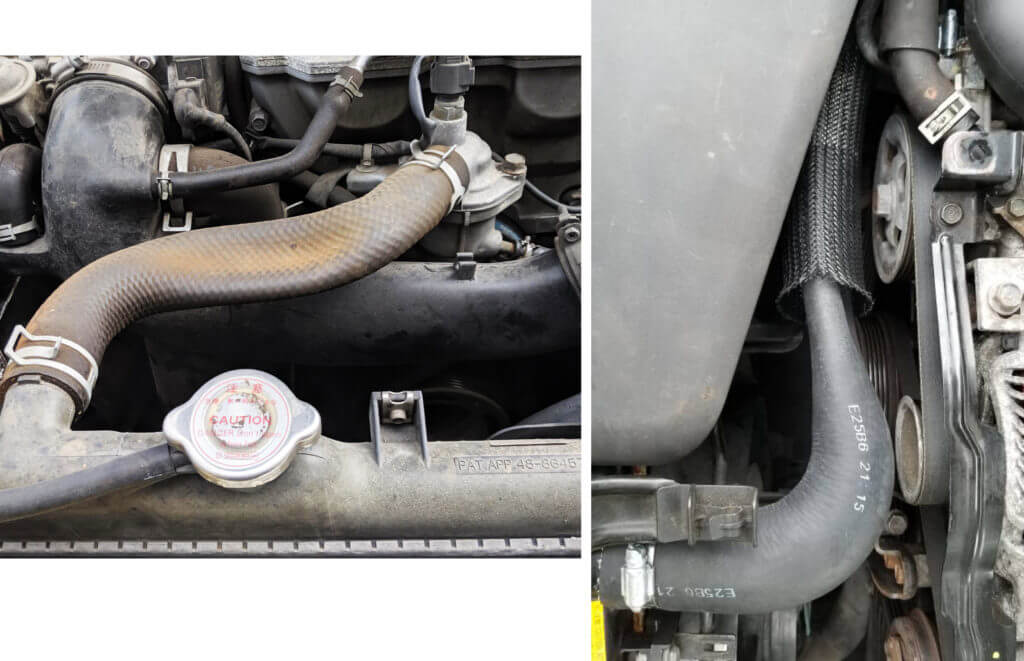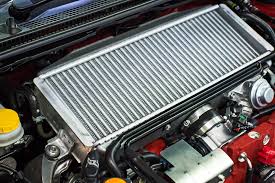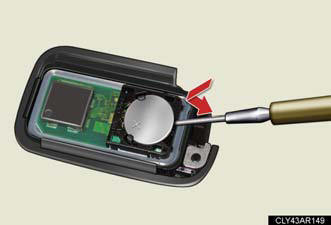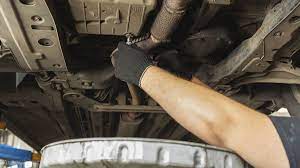The cost of replacing a car radiator should be a matter of serious concern. The reason is that radiator function is very vital to a car. Radiator prevents the engine from overheating. As the engine runs it produces heat, and coolant is run through it to help remove this excess heat. The coolant is then passed through the radiator, which cools it off and circulates it back through the engine to remove heat again. This heat is what you feel around the car when you come close to the car. It is also this same heat you feel little inside the car.
The radiator has two tanks, connected through tubes which are typically made from brass or aluminium. As the coolant passes through these tubes, the fan inside the radiator blows air across it to lower the temperature. These tanks are usually made from plastic, and one of the most common faults in the radiator is tanks crack and leak coolant. If this happens there’s a real risk that the engine will overheat, causing serious damage to the engine.

Another common fault is for the radiator to become blocked, preventing enough coolant from passing through the engine. Again, this risks the engine overheating and becoming seriously damaged so regular maintenance is essential.
If there’s substantial damage to these internal workings, the radiator may need to be replaced. In this case you will be advice either to repair or a full replacement is the best option for your car.
Sometimes, it is economical to repair your radiator. But this could actually be true if the radiator damage has not gone beyond repairs. The following is the cost of repairing a radiator.
However, the average cost to repair a car’s radiator is estimate of $1,000 and above. But what you’ll pay depends mostly on the make and model of your car. This is the estimate cost of radiator repairs on your personal vehicle’s base on make and model.
For a 2017/2018 Ford Fusion, you can expect to pay:
$225 to $368 to replace the coolant thermostat;
$131 to $197 to replace the lower radiator hose;
$119 to $180 to replace the radiator hose; and
$609.03 to $935.79 to replace the radiator completely.
For a 2017/2018 Ford Explorer, you can expect to pay:
$212 to $308 to replace the coolant thermostat;
$208 to $310 to replace the lower radiator hose;
$207 to $315 to replace the radiator hose; and
$734 to $1,132 to replace the radiator completely.
For a 2017/2018 Hyundai Elantra, you can expect to pay:
$313 to $500 to replace the coolant thermostat;
$345 to 539 for a radiator fan replacement;
$108 to $154 to replace the lower radiator hose;
$78 to $112 to replace the radiator hose; and
$595 to $919 to replace the radiator completely.
Additionally, the following price will vary from garage to garage and from state to state, but it should give you an idea of how much you can expect to pay to have the radiator in your car replaced by a professional mechanic.
Ford F-Series $315 – $402 $396 – $791 $711 – $1193
Chevrolet Silverado $142 – $181 $481 – $921 $623 – $1102
Ford Focus $110 – $141 $182 – $329 $292 – $470
Toyota Camry $244 – $311 $295 – $601 $539 – $912
Toyota Corolla $87 – $110 $205 – $519 $292 – $629
Nissan Altima $228 – $291 $419 – $548 $647 – $839
Honda CR-V $189 – $241 $270 – $531 $459 – $772
Honda Civic $173-$221 $272-$342 $445 to $563
Honda Accord $173 – $221 $265 – $358 $438 – $579
Ford Fusion $173 – $221 $363 – $672 $536 – $893
Note the reason to repair or replace your radiator depend you!

Whether you should try to repair or replace the radiator depends on the severity of the damage. One mighty says it’s best to just replace plastic radiators. Metal radiators, on the other hand, are easier to repair, and that route may save you some money.
Autoremedy365 recommends having your local auto repair shop inspect the radiator and make a recommendation on whether you should repair or replace just for cost effective.
Do you know you can maintain a radiator?
Radiator maintenance is one of ways your radiator last long. And as such it will not leak, rust, block to require you repair or replacing. The best way to keep your radiator running properly and avoid costly repairs is to get a radiator flush approximately every 36,000 miles. You can either do this yourself or bring it into the shop.
Over time, radiator coolant can build up debris and corrosion inside a radiator. A flush can help remove old antifreeze along with the coolant and contaminants, which can cause engine overheating.
Flushes can also help lubricate and lengthen the life of your water pump and prevent future coolant leaking, foaming, corrosion and debris build-up.
The maintenance process is as follows:
- Remove the radiator cap and drain the current antifreeze.
- Once it is been drained, pour in some cleaning solution until the radiator is full.
- Start and run your car for 10 to 15 minutes.
- Allow your car to cool for a few minutes.
- Repeat the process once more.
- Pour in your new antifreeze solution inside.
If you bring your car to the shop, make sure you ask them to do a full inspection, including checking for leaks.
We actually wish to discuss more on the worth of replacing a Radiator
Radiator replacement is partly expensive because you will need to drain and refill your cooling system. Due to the size of most vehicles’ cooling systems, there can be a significant expense just in antifreeze. Using universal type antifreeze is a good way to save money while still getting your car back on the road. Purchasing the antifreeze in concentrated form is always less expensive than using pre-diluted coolant. Just make sure you use the product that is right for your vehicle! Your mechanic can also direct you on the type to buy.
Another thing that adds to the radiator replacement cost for your vehicle is the coolant disposal fee. Engine coolant is an environmental hazard and needs to be disposed of carefully. The additives in antifreeze are hazardous to the environment as they can be extremely deadly when ingested by any living organism. If you hire a repair shop to replace your radiator, they have to pay an extra fee to dispose of the antifreeze they remove from your vehicle. Even if you chose to replace your own radiator, you may have to pay a fee at your local landfill or recycling center.
We want to see some of the factors that can Cause Radiator Failure?
Radiators can fail for a wide variety of reasons that range from poor maintenance to accidents and manufacturer defects. We will cover the most common reasons for radiator failure here but rest assured, these are not the only reasons why a radiator might fail.
Corrosion
A Radiator is made almost exclusively of metal and metal will corrode over time. Radiators make use of antifreeze or engine coolant which not only provides a mechanism for cooling but also has anti-corrosive properties as well. If you do not change your engine coolant frequently enough, then you will have issues with corrosion forming within your system. This corrosion can lead to plugs or stoppages within the radiator channels, preventing coolant from actually moving through the radiator and leading to a breakdown or overheating.
Read also: Major Causes of Engine over heat And What You Must Do
Electrolysis
Electrolysis comes from a bad engine ground, if your engine is not properly grounded, then electrical current can flow through the motor and into your coolant. This electrical current, combined with the electrical current that is flowing to your coolant, will lead to issues with the deterioration of the metals within your radiator overtime.
Accidents or Damage
One of the most common reasons for radiator failure is the occurrence of road debris hitting the radiator or radiator structure. As you drive along, all matter of debris is kicked up underneath your vehicle. Since the front of your car is maximized for air flow, this can lead to this debris striking your radiator. Worse yet, if the debris is larger, it can dislodge the radiator supports, knock off coolant hoses or punch a hole in your radiator! Any damage to the fin system of the radiator will lead to issues with cooling and therefore the eventual demise of the radiator.
How do I know My Radiator Is Failing?
You can tell your radiator is failing from a few key signs that start to show themselves once your radiator or your cooling system begins to develop issues. Here are the main culprits:
Over Heat
Your car is constantly running hot. Every vehicle has a temperature gauge within the instrument cluster that can indicate to the driver how hot the engine is or is not. If you noticed that this gauge is consistently on the high side, or near the red zone of the gauge, then your vehicle’s engine is doig over heat.
Coolant Loss
Another sign of radiator failure or cooling system failure, in general, is when the coolant is found underneath your vehicle after it is driven for a period of time. This shows that your vehicle is losing coolant from its main system and therefore losing the ability to effectively cool your engine!
Coolant Sludge
The color of the cool in your vehicle should be a bright yellow or bright green. As your radiator begins to fail, this brightly colored coolant does colors becomes infected with the contaminated metals within your radiator. This sludgy mess will not effectively cool down your vehicle’s engine.
Low Coolant
If you notice that your vehicle’s refill tank is consistently low, even after adding fluid to it, then you have an issue with coolant loss somewhere within your system. As mentioned above, this will lead to your vehicle eventually overheating.
How Much Does A Radiator Replacement Cost?
The toughest part about a failing radiator is the high cost that is involved. Unfortunately, a radiator is an expensive piece of equipment and is typically a process that involves a high amount of labor.
Year Make Model Price
2005 Toyota Camry $483 – $824
2006 Scion tC $386 – $592
2000 Honda Civic $387 – $737
2004 Honda Accord $443 -$577
2004 BMW 325i $487 – $687
As you can see, there is a wide variety of prices depending on the type of vehicle you own. However, these repair prices are still quite high and do not include other things such as belt replacements, coolant, hose replacements or other related repairs. From this article, we can see what it takes to repair or replace Radiator in your car base on the make and model of your car.







